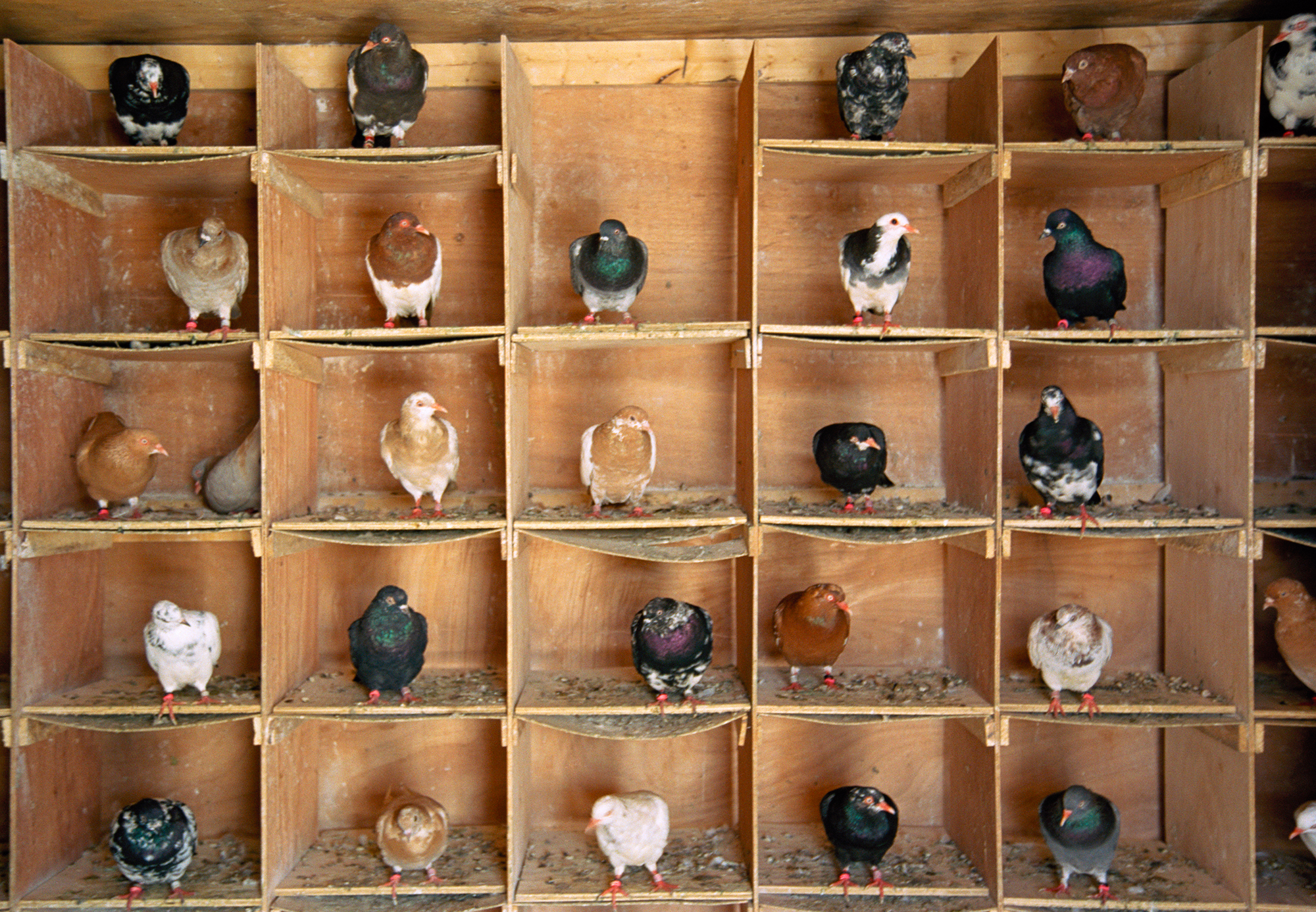Rooftop Brooklyn
These photographs document pigeon keeper Mike Alieca and his rooftop coop in the Bushwick section of Brooklyn, New York.
Project Statement
These photographs document pigeon keeper Mike Alieca and his rooftop coop in the Bushwick section of Brooklyn. A life long resident of the neighborhood, he began flying pigeons as a teenager. He was obsessed with a birdman’s coop across the street from his school. While sitting in class, Mike would watch him tend to his coop. After school, or sometimes during, he would visit the same rooftop and learn the secrets of keeping pigeons.
Now at the age of 53, Mike has bred his current stock to be smart and dedicated. His birds are sent out daily to battle pigeons from rival coops in an attempt to capture an opponent’s birds. These skirmishes take place in the sky with birds circling overhead in massive flocks, which can fly hundreds of feet above the rooftop and mix pigeons from numerous coops. Flags and vocal calls are used to direct the flock, although wind direction, weather conditions and the birds’ training have an impact on where and how far they will travel. The birds are taught to fly for hours and return to their coop but exhaustion or poor training can lure the birds to enemy rooftops. Captured birds, or prisoners of war, can be identified by color-coded leg bands, which indicate the bird’s keeper. The leg bands of captured birds are put on display as trophies of past victories. Enemy birds are sold or traded back to their owners, if the birds are prized, they are kept and bred for the next generation of flyers. Throughout the outer boroughs of New York City, there are hundreds of keepers with some coops containing thousands of pigeons. Fiercely competitive and dedicated, urban pigeon keepers carry on a dwindling but vibrant tradition.
This series of photographs has evolved from a simple curiosity to a deep respect. I introduced myself to Mike at a pet shop that specializes in pigeons, offering him free prints for access to his coop. His willingness to be photographed made him the perfect subject. In my weekly visits, I began by photographing feeding, breeding, roosting and pigeon watching on the rooftop, which helped me understand the basics of pigeon keeping. That initial period also gave Mike the time to become comfortable with me and to forget about my camera. Mike and I would coordinate our schedules so that I could be there in the morning when Mike chased his birds out of the coop or at dusk when the aerial skirmishes take place. I began to understand how the birds would circle after take off and which direction they would fly. Mike taught me about flying tactics and pigeon psychology and these lessons have helped me make these photographs.
Mike has said he would rather be on the roof with his birds than on the street. In New York City, the streets are often loud, dirty and chaotic. The roof is an urban refuge from what goes on below. The cadence of fluttering and cooing pigeons is a welcome relief from the ambient noise of the city. Uninterrupted views of open sky and distant horizons dotted with public housing towers and tiny Manhattan skyscrapers are unique views of New York that most people will never see.
I officially joined the culture of pigeon keepers. After consulting with my neighbors, I built a coop and bred from a purchased pair of white homing pigeons. The birds are trained to return to their coop after being released from a distance of up to five miles. I intend to increase their flying endurance by taking them to the outer edges of the city.
The project was shown at The Arsenal Gallery, New York, NY in 2005.












